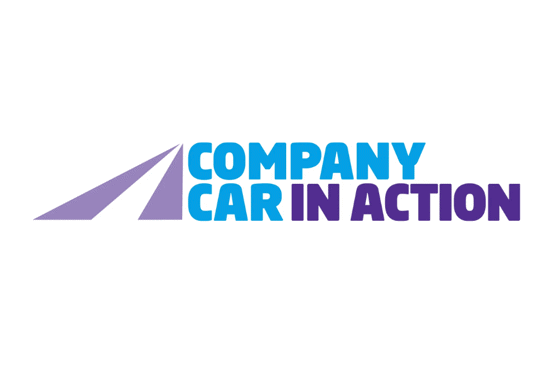The Office for Budget Responsibility (OBR) has halved its forecast for economic growth this year, from 2% to 1%, and lowered the forecast path for the level of productivity.
However, the Chancellor, Rachel Reeves, told MPs in the Spring Statement that the long-term growth estimates have been upgraded, with GDP growth of 1.9% expected in 2026, 1.8% in 2027, 1.7% in 2028, and 1.8% in 2029.
Inflation, meanwhile, will peak at 3.8% in July 2025, before falling close to the 2% target from Q2 2026 until the end of the forecast period.
Fleet decision-makers and the wider leasing industry will be disappointed that there was no announcement about the threshold for the surcharge on vehicle excise duty (VED), also known as the expensive car allowance or the luxury car tax.
The Government had acknowledged the new tax posed a problem for the EV market.
In the Autumn Budget, the Government said it recognised the “disproportionate impact” of the expensive car supplement threshold for those purchasing zero emission cars and would consider raising the threshold for zero-emission cars at a future fiscal event, to make it easier to buy electric cars.
“Our current decarbonisation targets are at major risk unless policymakers deliver a comprehensive set of measures to drive long-term demand,” Toby Poston, BVRLA
Prior to the Spring Statement, Reeves had been urged by the fleet and leasing sector to change the threshold for the surcharge on vehicle excise duty (VED), also known as the expensive car allowance or the luxury car tax.
It was introduced in 2017, for all new, internal combustion engine (ICE) vehicles costing more than £40,000.
In 2022, the then Chancellor, Jeremy Hunt, announced it would also apply to EVs, including plug-in hybrids (PHEVs), from April 2025.
The £40,000 threshold includes optional extras and is based on the manufacturer’s official list price of the car, not the price actually paid by the customer.
Vehicle leasing company Alphabet recently revealed that just one-in-five zero-emission cars (19%) currently cost less than £40,000.
It currently costs £410 and is paid annually for five years starting from the first standard VED payment that is made when the car is a year old.
It is set to rise to £425 from April, leaving fleets facing increased rentals and, in turn, impacting wholelife costs, crucial to making EVs an economical as well as a green choice.
This comes on top of first-year VED rates are being increased from zero to £10 for battery electric vehicles (BEVs) and from zero to £110 for PHEVs emitting between 1-50g/km of CO2 from April.
Second year rates, which will be applied retrospectively, have risen more dramatically for BEVs – from zero to £195.
The Association of Fleet Professionals (AFP) has warned that some fleets will see their liability on EVs rise per vehicle from zero to £2,490 over a five-year period.
In an effort to soften the blow of increased VED costs, the AA had urged the Chancellor to cut VAT on public charging from 20% to 5%.
Toby Poston, chief executive of the British Vehicle Rental and Leasing Association (BVRLA), said: “Electric vehicle registrations have never been higher, but the fleet and mobility services sector’s confidence in a fast, fair and affordable net zero transition is wobbling.
“Today’s Spring Statement failed to acknowledge or address the uncertainty and lack of confidence surrounding the electric vehicle market.
“Our current decarbonisation targets are at major risk unless policymakers deliver a comprehensive set of measures to drive long-term demand.
“The clock is ticking, and next week’s VED hikes will see that pressure building.”
Sue Robinson, chief executive of the National Franchised Dealers Association (NFDA), which represents franchised car and commercial vehicle dealers across the UK, added: “The Spring Statement did not provide an update on the electrification of the UK car parc.
“This transition provides a huge economic opportunity for the UK and the Government needs to be incentivising consumers to purchase a new vehicle, which will drive growth in the UK economy.”
Ian Hughes, CEO of Zenith’s corporate and consumer divisions, noted that drivers will at least be relieved “no further tax changes were announced today”.
He added: “We look forward to hearing the results of the most recent zero emission transition consultation as the Government acts on industry insight to further support the transition.”
Cuts in welfare spending and more money for defence

According to the OBR, prior to policies being announced today (Wednesday, March 26), debt interest costs and other forecast changes left the current budget in deficit by £4bn in 2029-30.
However, it now says that policy changes, including welfare reforms and day-to-day departmental spending reductions, restore it to the £10bn surplus the Chancellor had in October.
The OBR added that this remains a small margin against the risk of further shocks to interest rates, productivity, or global trade.
In terms of welfare reform, incapacity benefits under universal credit (UC) are to be halved and cut for new claimants.
It comes after official forecasters said a package of cuts announced last week would save only £3.4bn in 2030 rather than £5bn initially claimed by ministers.
The package included a stricter eligibility test for personal independence payments (Pips), the main disability benefit, from November 2026.
Incapacity benefits to be frozen in cash terms for existing claimants at £97 per week from April next year, with a top-up payment for those with the most severe conditions.
Those aged under 22 will no longer be able to claim the incapacity benefit top-up of universal credit.
It is also aiming to reduce the administrative costs of Government departments by 15% by 2030. Some 10,000 civil service jobs are expected to go, including staff working in HR, policy advice, communications and office management.
Meanwhile, defence spending, which had been due to rise £2.9bn next year, to increase by a further £2.2bn.
The Treasury says this will take military expenditure to 2.36% of national income next year, a “down payment” on plans to raise it to 2.5% by 2027.
Read more reaction to the Spring Statement from the fleet and leasing sector.





















Login to comment
Comments
No comments have been made yet.